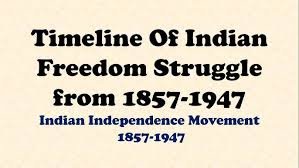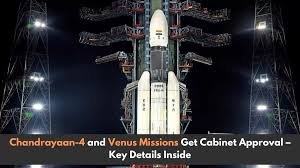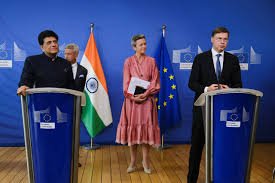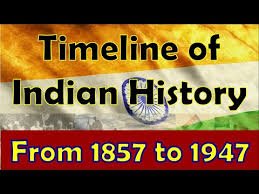The Timeline of Indian Independence from 1857 to 1947
Introduction to Indian Independence India’s journey to independence was a long and arduous one, spanning almost a century from the First War of Independence in 1857 to the eventual freedom from British rule in 1947. This timeline is a crucial part of Indian history, reflecting the relentless struggle, sacrifices, and resilience of countless freedom fighters and ordinary citizens. Understanding this period is essential for anyone preparing for government exams, as it forms the bedrock of modern Indian history.
The First War of Independence (1857) The Indian Rebellion of 1857, often referred to as the First War of Independence, was a major, but ultimately unsuccessful, uprising against the British East India Company’s rule. It marked the beginning of a nationalistic movement, sowing the seeds of discontent and rebellion that would later culminate in India’s independence. The causes were multifaceted, including political, economic, social, and military grievances. The rebellion, although suppressed, awakened a national consciousness and laid the groundwork for future resistance.
Formation of the Indian National Congress (1885) The establishment of the Indian National Congress (INC) in 1885 marked a significant milestone in the Indian independence movement. Initially conceived as a platform for airing grievances and seeking reforms, the INC evolved into the principal organization advocating for self-rule. The INC’s early years were dominated by moderate leaders who sought gradual reforms through constitutional means. However, the turn of the century saw the rise of more radical leaders who demanded complete independence.
The Role of Mahatma Gandhi and Non-Cooperation Movement (1920) Mahatma Gandhi emerged as a pivotal leader in the Indian independence movement, advocating for non-violent resistance. The Non-Cooperation Movement launched by Gandhi in 1920 marked a shift in the Indian struggle for freedom, with millions of Indians boycotting British goods, institutions, and honors. This movement was a significant step in uniting Indians across regions and religions against British rule, emphasizing self-reliance and civil disobedience.
The Salt March and Civil Disobedience Movement (1930) The Salt March of 1930, also known as the Dandi March, was a landmark event in the Indian independence movement. Led by Mahatma Gandhi, the march was a direct action campaign against the British salt tax, symbolizing a broader resistance against British economic exploitation. The Civil Disobedience Movement that followed the Salt March galvanized the Indian population, with widespread participation in non-violent protests, boycotts, and refusal to pay taxes.
The Quit India Movement (1942) The Quit India Movement of 1942 was a decisive phase in the struggle for independence. Launched by the INC under the leadership of Mahatma Gandhi, the movement called for an end to British rule in India. Despite severe repression by the British, the movement intensified the demand for independence, making it clear that the British could no longer govern India without the consent of the governed. The movement’s slogan, “Do or Die,” became a rallying cry for freedom fighters.
India’s Independence and Partition (1947) On August 15, 1947, India finally achieved independence from British rule. However, this victory was accompanied by the painful partition of the country into India and Pakistan, leading to widespread communal violence and displacement. The independence of India marked the end of nearly 200 years of British colonial rule and the beginning of a new era of self-governance. The events of 1947 continue to shape the political and social landscape of the Indian subcontinent.

Why this News is Important
Understanding the Foundations of Modern India The timeline of Indian independence from 1857 to 1947 is not just a historical account but the foundation of modern India. It reflects the country’s transformation from a British colony to a sovereign nation. For students preparing for government exams, particularly those in history and civil services, this timeline is crucial for understanding the evolution of India’s political and social structures. It provides insights into the causes and effects of colonialism and the resilience of the Indian people.
Relevance to Competitive Exams The events leading to India’s independence are frequently covered in competitive exams, making this timeline an essential part of exam preparation. Questions related to key events, personalities, and movements are common in exams like UPSC, SSC, and state-level civil services. Understanding this timeline helps students not only in answering direct questions but also in developing a broader perspective on India’s history and its implications on contemporary issues.
A Source of Inspiration The Indian independence movement is also a source of inspiration, highlighting the power of unity, perseverance, and non-violent resistance. For those aspiring to serve in government positions, understanding this period is important not just academically but also as a guide to the values and principles that shaped the nation. The sacrifices of the freedom fighters serve as a reminder of the responsibilities that come with freedom and governance.
Historical Context:
The Indian Independence Movement
The Impact of British Colonialism British colonial rule in India began in the mid-18th century and was characterized by economic exploitation, political domination, and social control. The economic policies of the British led to the deindustrialization of India, transforming it from a manufacturing hub to a supplier of raw materials. The social and cultural imposition, coupled with discriminatory practices, created widespread discontent, setting the stage for the independence movement.
The Rise of Nationalism The 19th century saw the rise of Indian nationalism, fueled by the economic hardships imposed by British rule and the spread of Western education. The formation of the Indian National Congress in 1885 marked the beginning of organized political activity aimed at self-rule. The INC played a central role in articulating the demands of Indians and mobilizing public opinion against British rule.
Gandhian Influence and Mass Movements Mahatma Gandhi’s arrival in India in 1915 and his adoption of non-violent civil disobedience as a strategy for resistance marked a new phase in the independence movement. Gandhi’s leadership transformed the struggle into a mass movement, involving people from all sections of society. The Non-Cooperation Movement, Civil Disobedience Movement, and Quit India Movement were key campaigns that weakened British control and set the stage for independence.
The Road to Partition The demand for independence eventually led to the partition of India, driven by religious and political differences between Hindus and Muslims. The creation of Pakistan as a separate nation was a consequence of these tensions, resulting in one of the largest mass migrations in history and significant communal violence. The partition remains a sensitive and complex chapter in the history of the Indian subcontinent.
Key Takeaways from “The Timeline of Indian Independence from 1857 to 1947”
| Sr. No. | Key Takeaway |
|---|---|
| 1 | The First War of Independence in 1857 marked the beginning of organized resistance against British rule. |
| 2 | The formation of the Indian National Congress in 1885 was a turning point in the Indian independence movement. |
| 3 | Mahatma Gandhi’s leadership and the Non-Cooperation Movement in 1920 united the nation in the struggle for independence. |
| 4 | The Salt March of 1930 and the Civil Disobedience Movement were significant in challenging British authority. |
| 5 | The Quit India Movement in 1942 was a decisive push towards Indian independence, leading to the end of British rule in 1947. |
Important FAQs for Students from this News
1. What was the significance of the First War of Independence in 1857?
The First War of Independence in 1857 was significant because it marked the beginning of a widespread, organized resistance against British colonial rule in India. Although it was ultimately unsuccessful, it set the stage for future nationalist movements and highlighted the widespread discontent with British rule.
2. How did the Indian National Congress contribute to India’s independence?
The Indian National Congress (INC) played a crucial role in the independence movement by providing a platform for political activism and reform. Initially seeking moderate reforms, the INC evolved to demand complete independence, leading major campaigns like the Non-Cooperation Movement and the Quit India Movement.
3. What was the role of Mahatma Gandhi in the Indian independence movement?
Mahatma Gandhi was a key figure in the Indian independence movement, promoting non-violent resistance and civil disobedience. His leadership in movements such as the Non-Cooperation Movement, the Salt March, and the Quit India Movement mobilized millions of Indians against British rule.
4. What were the main events leading up to India’s independence in 1947?
Key events leading to India’s independence included the First War of Independence (1857), the formation of the Indian National Congress (1885), Mahatma Gandhi’s leadership and major campaigns (1920-1942), and the Quit India Movement (1942). These events intensified the demand for independence, culminating in India’s freedom on August 15, 1947.
5. Why did India’s independence come with the partition of the country?
India’s independence came with the partition due to religious and political tensions between Hindus and Muslims. The demand for a separate Muslim state led to the creation of Pakistan, resulting in significant communal violence and the largest mass migration in history.
Some Important Current Affairs Links















